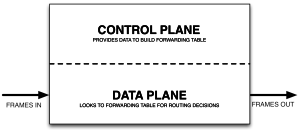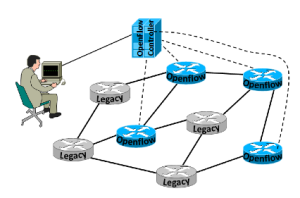A brief look to SDNs

Welcome everyone! How are you?
In today's post, we are going to talk about a concept increasingly used in the last months that promises to change radically the networks as we understand nowadays. We are referring to the concept of SDN, Software Defined Network.
The main idea of SDN is to separate the control of the hardware in a network, and add a software controller to manage it. With the implementation of this system, networks improve in terms of flexibility, dynamism and scalability, key factors in nowadays data centers and cloud computing environments, where most of the resources are virtualized and net architectures are plane and agile. This idea also integrates with the trends that nowadays move TIC companies, like automatization, virtualization, cloud computing and new generation data centers.
Conventional networks have the hardware and software fused in a unique block, depending always one part of the other. The operation of this system consists in commuting packets that arrive at a device following the instructions of the firmware that this has installed. This system is capable of distinguish different types if traffic and treat them in a different way, so they are quite sophisticated and effective, but they also have a high cost. So, what are the differences between conventional networks and SDNs?
SDN is a network defined by software that can be administrated from a single console, so devices don't have to be configured one by one. The administrator of the network can do all the necessary changes just modifying the network software, without the need of changing the hardware of the infrastructure and with the possibility of changing the configuration of all devices from a single console.
After this explanation about what are SDNs, we are going to name some of the main advantages that these give us (besides those named above).
- Possibility to program any behavior wanted for the network in a simple way.
- Reduce the CAPEX, because it allows the reutilization of the present hardware.
- The ability to provide resources on demand, depending of the petitions of the applications.
- All infrastructure is delivered as a service and automated by software.
- Flexibility, dynamism and scalability, facts that make easier some posibles changes in a network.
- They permit a lot of innovation
- All the network can be administrated from a single console.
Main solutions on today's data centers include SDN, as it is a very useful solution to implement virtualization and cloud (two systems used in most of nowadays data centers). Experts in the subject say that SDNs are the future, so it is not strange that companies (who haven't done yet) are implementing this method as fast as they can.
In the following links, we can see the vision of three important manufacturers about SDNs:
So that's all for today. We hope you have learn something new about SDNs, and we expect you're here on the next post. See you soon!


Add new comment